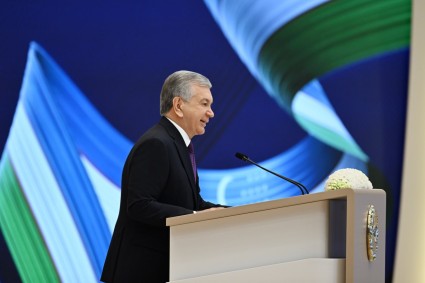Uzbekistan’s public debt as of January 1, 2024 reached $34.9 billion, recording $5.7 billion increase over the past year, the Ministry of Economy and Finance said in a report. This is more than the forecasted figure ($32.1 billion) by $2.8 billion.
Public external debt in 2023 increased by 3.73 billion to $29.64 billion (32.6% of GDP). Of this amount, $23.91 billion is debt raised on behalf of the government and $5.72 billion is guaranteed by the Uzbek state.
Public domestic debt increased by $1.97 billion to $5.29 billion (5.8% of GDP). Of this amount, $1.78 billion (21.9 trillion soums) are government securities, $3.51 billion is domestic debt guaranteed by the state.
The ratio of public debt to the country's GDP increased from 36.4% in 2022 to 38.4% in 2023 (35.7% was planned).
For comparison: in 2017, the national debt was $11.5 billion (11.6% of GDP); in six years, this figure has tripled. We are talking only about public debt without the “private debt”.
Debt distribution by sector
Public external debt by economic sector in 2023:
- State budget support - $11.6 billion, 33.2% of the total debt (in 2022 it was $8.6 billion);
- Energy - $5.8 billion, or 16.6% of total debt ($3 billion);
- Agriculture and water management - $2.8 billion ($2.54 billion);
- Transport and transport infrastructure - $2.8 billion ($2.84 billion);
- Housing and utility services - $2.6 billion ($2.3 billion);
- Support for business and industrial production - $1.1 billion ($1.1 billion);
- Chemical industry - about $900 million (1 billion);
- Education, healthcare, telecommunications - $2 billion (1.1 billion);
- Other industries - $897 million (0.91 billion).
Almost 50% of the debt is for budget support and energy.
Creditors
Public external debt by creditors:
- World Bank - $6.6 billion (5.5 billion);
- Asian Development Bank - $6.4 billion (6 billion);
- Islamic Development Bank - $0.9 billion (0.9 billion);
- International investors (international Eurobonds) - $3.4 billion (2.6 billion);
- Japan International Cooperation Agency - $2 billion (1.9 billion);
- Exim Bank of China - $1.9 billion (1.9 billion);
- State Development Bank of China and others - $1.4 billion (2.1 billion);
- Asian Infrastructure Investment Bank (headquartered in China) - $1.3 billion;
- Islamic Development Bank - $0.9 billion (0.9 billion);
- Korea Economic Cooperation Development Fund - $0.8 billion (1 billion);
- International Monetary Fund - $0.8 billion;
- French Development Agency - $0.7 billion (0.7 billion);
- Japan Bank for International Cooperation - $0.3 billion (0.4 billion);
- European Bank for Reconstruction and Development and European Investment Bank - $0.3 billion;
- Other international financial institutions - $2.4 billion (2.4 billion).
The currency structure of external debt (which is one of the indicators of the actual risk to the economy associated with changes in the exchange rate) looks like this:
- US dollar - 71.4% (was 75.7%);
- Uzbek soums - 6.9% (1.6%);
- SDR (Special Drawing Rights) - 6.7% (7.2%);
- Japanese yen - 6.2% (8.1%);
- Euro - 4.1% (4.8%);
- Chinese Yuan - 1.9% (0.8%);
- South Korean won -0.5% (0.67%);
- Saudi rial, Kuwaiti dinar and UAE dirham - 0.6% (2.3%).














